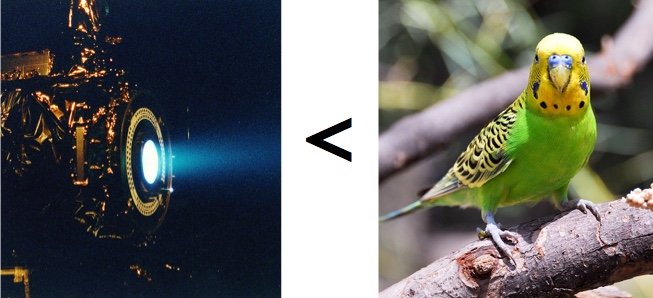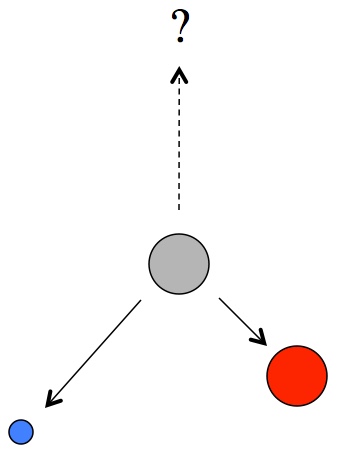Physicist: In a word: no.
A reactionless drive is basically a closed box with the ability to just start moving, on its own, without touching or exuding anything. The classic sci-fi tropes of silent flying cars or hovering UFOs are examples of reactionless drives.
The problem at the heart of all reactionless drives is that they come into conflict with Newton’s famous law “for every action there is an equal and opposite reaction” (hence the name). To walk in one direction, you push against the ground in the opposite direction. To paddle your canoe forward, you push water backward. The stuff you push backward so you can move forward is called the “reaction mass”.
This is a universal law, so unfortunately it applies in space. If you want to move in space (where there’s nothing else around) you need to bring your reaction mass with you. This is why we use rockets instead of propellers or paddles in space; a rocket is a mass-throwing machine.
But mass is at a premium in space. It presently costs in the neighborhood of $2000/kg to send stuff to low Earth orbit (a huge improvement over just a few years ago). So, the lighter your rocket, the better. Typically, a huge fraction of a rocket’s mass is fuel/reaction mass, so the best way to make spaceflight cheaper and more feasible is to cut down on the amount of reaction mass. The only way to do that at present is to use that mass more efficiently. If you can throw mass twice as fast, you’ll push your rocket twice as hard. Traditionally, that’s done by burning fuel hotter and under higher pressure so it comes shooting out faster.
In modern rockets the exhaust is moving on the order of 2-3 km per second. However, your reaction mass doesn’t need to be fuel, it can be anything. Ion drives fire ionized gas out of their business end at up to 50 km per second, meaning they can afford to carry far less reaction mass. Space craft with ion drives are doubly advantaged: not only are they throwing their reaction mass much faster, but since they carry less of it, they can be smaller and easier to push.
The drawback is that ion drives dole out that reaction mass a tiny bit at a time. The most powerful ion drives produce about 0.9 ounces of force. A typical budgie (a small, excitable bird) weighs about 1.2 ounces and, since they can lift themselves, budgies can generate more force than any ion drive presently in production.

Compared to rockets, ion drives pack a greater punch for a given amount of reaction mass. However, they deliver that punch over a very long time and with less force than a budgie.
Given the limitations and inefficiencies, wouldn’t it be nice to have a new kind of drive that didn’t involve reaction mass at all? You’d never have to worry about running out of reaction mass; all you’d need is a power supply, and you could fly around for as long as you want.
That’s not to say that propellantless propulsion isn’t possible. There are ways to move without carrying reaction mass with you. You can use light as your exhaust (a “photon drive”), but you’ll notice that a flashlight or laser pointer doesn’t have much of a kick. And you can slingshot around planets, but then the planet is your reaction mass.
The problem with reactionless drives, fundamentally, is that Newton’s third law has no (known) exceptions. It is one of the most bedrock, absolute rules in any science and a keystone in our understanding of the universe. On those rare occasions when someone thought they had found an exception, it always turned out to be an issue with failing to take something into account. For example, when a neutron decays into a proton and electron, the new pair of particles don’t fly apart in exactly opposite directions. Instead, the pair have a net momentum that the original neutron did not.

When a stationary neutron (gray) decays into a proton (red) and electron (blue), the new pair flies apart, but always favor one direction. Newton’s laws imply that there must be a third particle moving in the other direction to balance the other two.
The implication (according to Newton’s law) is that there must be another particle to balance things out. And that’s exactly the case. Although the “extra particle that’s really hard to detect” theory was first proposed in 1930, it wasn’t until 1956 that neutrinos were finally detected and verified to exist. The imbalanced momentum, a violation of Newton’s laws, came down to a missing particle. Today neutrinos are one of the four ways we can learn about space, along with light, gravity waves, and go-there-yourself.
There are plenty of ideas floating around about how to create reactionless drives, such as the Woodward Effect or the Albecurrie warp drive. But in no case do these ideas use established science. The Woodward effect depends on Mach’s principle (that somehow inertia is caused by all the other matter in the universe), and reads like a pamphlet a stranger on the street might give you, while the Albecurrie drive needs lots of negative energy, which flat-out isn’t a thing.
Science is all about learning things we don’t know and trying to prove our own theories wrong. While scientific discovery is certainly awe inspiring, it is also the exact opposite of wishful thinking. That said, good science means keeping an open mind much longer than any reasonable person would be willing to. In the ultimate battle between theoretical and experimental physics, the experimentalists always win. If someone ever manages to create a self-moving, reactionless drive, then all the theories about why that’s impossible go out the window. But as of now, those theories (standard physics) are holding firm. We can expect that for the rest of forever, all space craft will have a tail of exhaust behind them.








38 Responses to Q: Is reactionless propulsion possible?